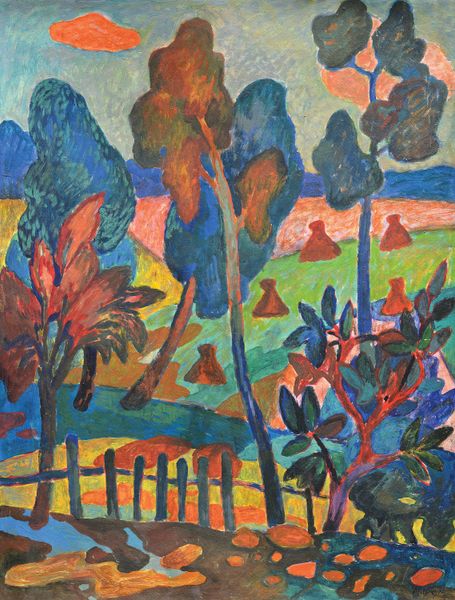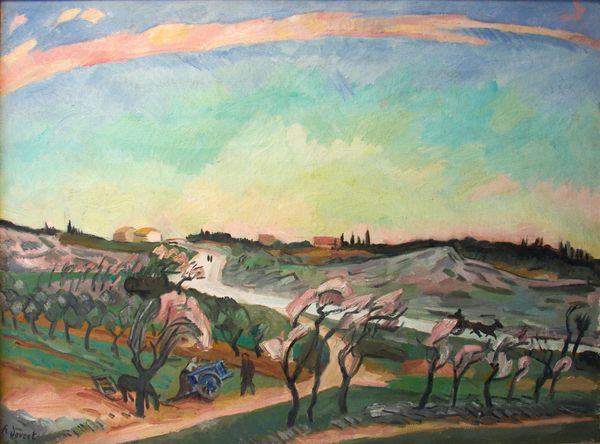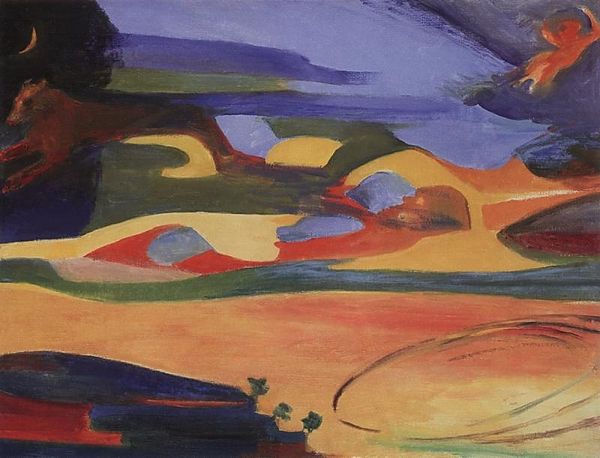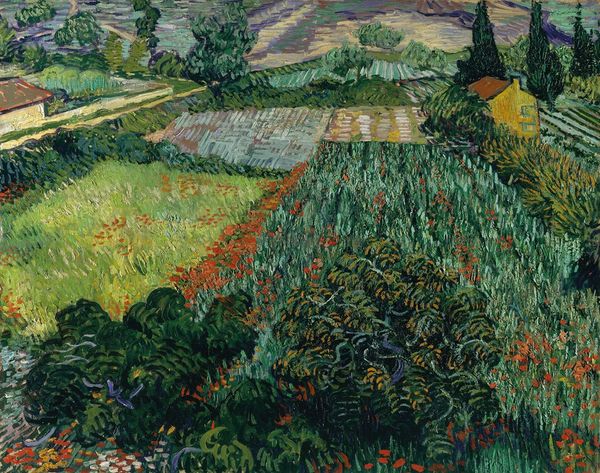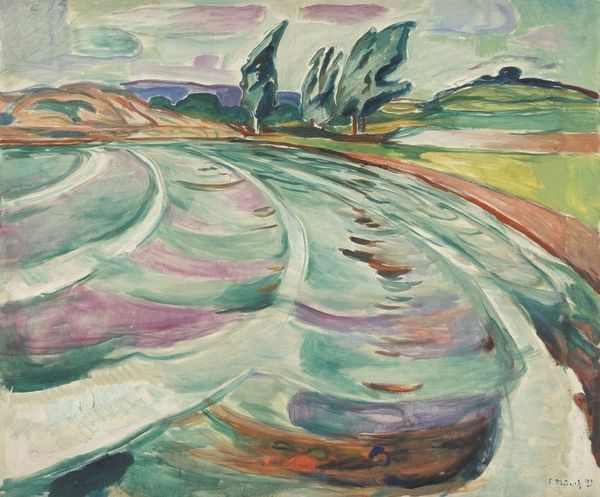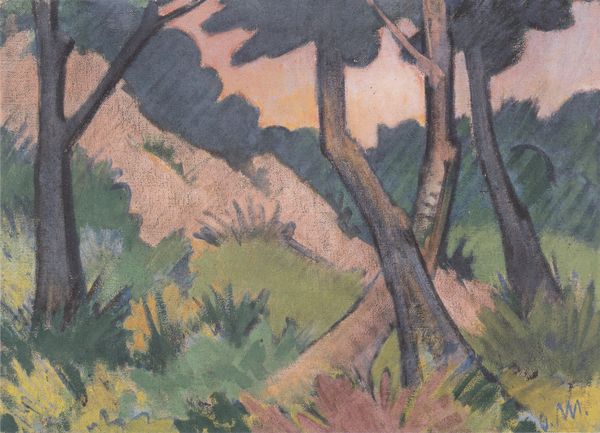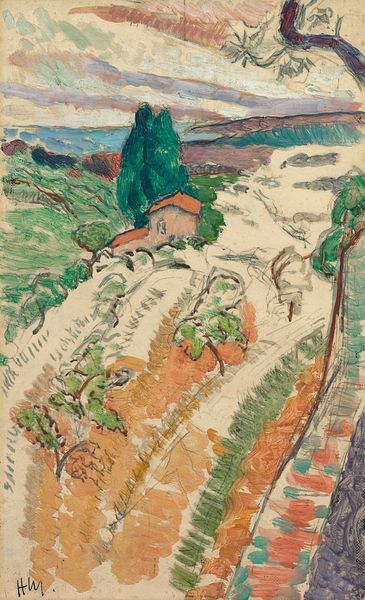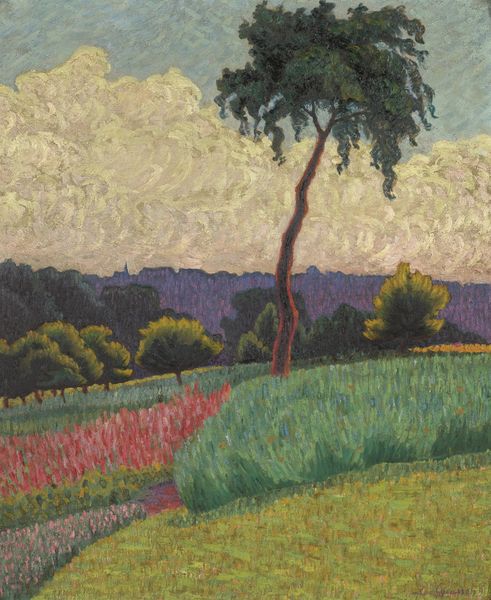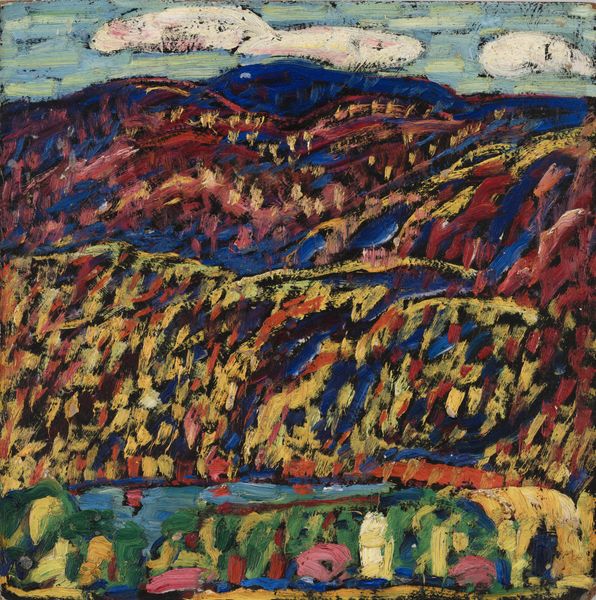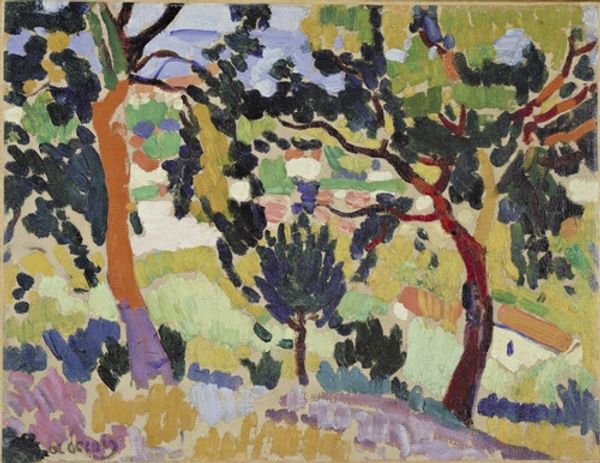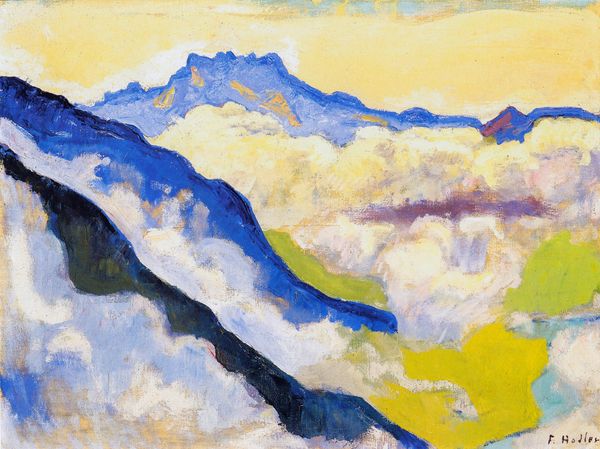
Dimensions: 47.5 x 64 cm
Copyright: Public domain
Curator: August Macke painted "Vegetable Fields" in 1911, using oil paint to capture this landscape scene. Editor: Oh, the yellow haystacks—or are they actually vegetable renderings?—leap out! There’s such childlike joy in those shapes, plump against the horizon. Curator: Note how the composition relies on distinct, geometric blocks. The fauvist color palette heightens the painting's structural impact, defying traditional landscape art. Editor: It almost feels like two separate landscapes are being joined together by the path, a meditation on diverging directions and different crops of a scene. Does it say something about perspective, maybe the artist seeing both avenues but remaining at this crucial junction? Curator: Possibly. But the dual paths serve to structure the entire composition. There's a very calculated movement from the convergence to those vividly painted fields, offering the viewer structured visual information. Editor: I don't know. The geometry is certainly there, but I'm struck by how organic it feels. The painting feels to me like a world bursting with possibility, as each element lives in a joyful chaos, even though their relationship is obvious. Curator: Consider the relationship between Fauvism and Modernism in this piece. The expressive color serves Modernist goals, highlighting how artists are thinking through visual perception. Editor: True, yet to me, the most important element here is the painting's optimism and, quite simply, it's fun. This painting manages to be interesting from every direction, leading to some delightful new impression. Curator: Ultimately, Macke gives us a fascinating view on structure through expressive and theoretical techniques. Editor: I'm glad that he embraced joyful uncertainty and captured it so cleverly on canvas.
Comments
No comments
Be the first to comment and join the conversation on the ultimate creative platform.
